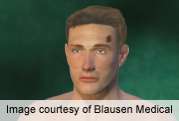Accuracy of melanoma detection up in specialized clinics

(HealthDay) -- From 1998 to 2007, the accuracy of melanoma detection improved in specialized but not non-specialized clinical settings, according to research published in the July issue of the Journal of the American Academy of Dermatology.
Giuseppe Argenziano, M.D., of Arcispedale Santa Maria Nuova in Reggio Emilia, Italy, and colleagues conducted a 10-year, multicenter study of 300,215 cases of melanoma excised between 1998 and 2007 to assess the accuracy of melanoma detection at participating clinics. The number needed to excise (NNE) was measured by dividing the number of excised lesions by the number of melanomas, and changes in NNE were assessed over time and between clinical settings.
Overall, a total of 17,172 melanomas and 283,043 melanocytic nevi were identified. The researchers found that in specialized clinical settings the NNE was 8.7, whereas in non-specialized clinical settings the NNE was 29.4. Over time, the NNE in specialty clinics improved from 12.8 to 6.8 but failed to improve in non-specialty clinics. For patients younger than 40 years and for lesions located on the trunk, higher NNE values were observed.
"Over the 10-year study period, accuracy in melanoma detection improved only in specialized clinics maybe because of a larger use of new diagnostic techniques such as dermatoscopy," the authors write.
More information:
Abstract
Full Text (subscription or payment may be required)
Copyright © 2012 HealthDay. All rights reserved.















